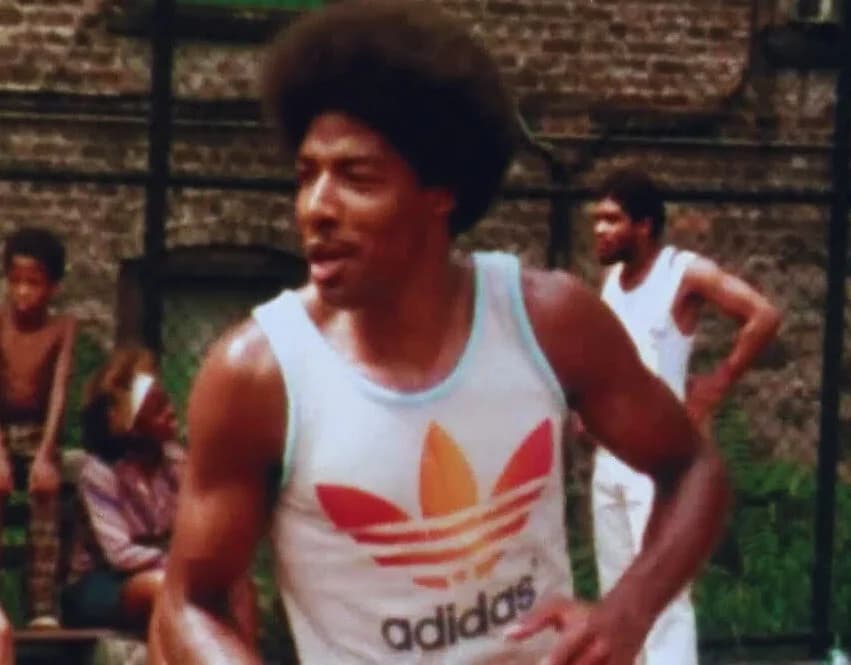
Dr. J’s Wardrobe Slam Dunk: Julius Erving’s Suit Trends, Leaving Fans Divided Over Timeless Class
In a recent turn of events, NBA legend Julius Erving, famously known as Dr. J’s Wardrobe Slam Dunk has taken the basketball community by storm, not with his on-court prowess, but with his off-court suaveness. The 73-year-old made a surprise appearance at the In-Season Tournament semifinal game between the New Orleans Pelicans and the Los Angeles Lakers, leaving fans, WNBA legend Candace Parker, and former Philadelphia 76ers coach Doc Rivers in awe of his timeless style.
The unexpected appearance of Julius Erving at the In-Season Tournament semifinal game not only stirred excitement but also sparked controversy, centered around the ageless elegance displayed by the basketball legend. Erving, donning a tailored suit at the age of 73, left fans and fellow sports figures in awe, drawing comparisons to Hollywood icon Denzel Washington.
NBA legend Julius Erving, famously known as Dr. J’s Wardrobe Slam Dunk has taken the basketball community by storm
The video clip shared on social media platforms became an instant sensation, with fans flooding the comments section with praises like “The Denzel of the NBA.” The striking resemblance between Erving and Washington in terms of maintaining physical fitness and style became a focal point of the online discourse.
In an era where athletes are celebrated not only for their on-court achievements but also for their off-court persona, Julius Erving’s fashion statement added a new layer to the ongoing conversation about age, style, and the perception of athletes beyond their playing days.
Julius Erving’s appearance has reignited the age-old debate about whether athletes, especially those considered legends of the game, should maintain a certain image as they age. While the NBA icon’s sartorial choice was met with overwhelming approval, it also spurred discussions about the expectations placed on athletes to defy the conventional aging process.
The comparison to Denzel Washington, a figure synonymous with timeless charisma, underscores the societal norms that dictate how athletes should present themselves, even in retirement. Erving’s ability to effortlessly blend style with substance challenges stereotypes and raises questions about the unwritten rules governing an athlete’s public image.
As fans continue to celebrate Erving’s class and sophistication, the controversy lies in the unspoken pressures on athletes to conform to societal expectations. The narrative extends beyond the basketball court, delving into the broader conversation about aging, fashion, and the freedom of individuals to express themselves irrespective of age.
In an age where athletes are breaking barriers and redefining norms, Julius Erving’s suave appearance serves as a reminder that icons of the game can transcend generational expectations. The controversy, if any, lies in the uncharted territory of dismantling preconceived notions about how sports legends should navigate the aging process, both in their physicality and in matters of style.
In a recent turn of events, NBA legend Julius Erving, famously known as Dr. J’s Wardrobe Slam Dunk has taken the basketball community by storm, not with his on-court prowess, but with his off-court suaveness. The 73-year-old made a surprise appearance at the In-Season Tournament semifinal game between the New Orleans Pelicans and the Los Angeles Lakers, leaving fans, WNBA legend Candace Parker, and former Philadelphia 76ers coach Doc Rivers in awe of his timeless style.
The unexpected appearance of Julius Erving at the In-Season Tournament semifinal game not only stirred excitement but also sparked controversy, centered around the ageless elegance displayed by the basketball legend. Erving, donning a tailored suit at the age of 73, left fans and fellow sports figures in awe, drawing comparisons to Hollywood icon Denzel Washington.
NBA legend Julius Erving, famously known as Dr. J’s Wardrobe Slam Dunk has taken the basketball community by storm
The video clip shared on social media platforms became an instant sensation, with fans flooding the comments section with praises like “The Denzel of the NBA.” The striking resemblance between Erving and Washington in terms of maintaining physical fitness and style became a focal point of the online discourse.
In an era where athletes are celebrated not only for their on-court achievements but also for their off-court persona, Julius Erving’s fashion statement added a new layer to the ongoing conversation about age, style, and the perception of athletes beyond their playing days.
Julius Erving’s appearance has reignited the age-old debate about whether athletes, especially those considered legends of the game, should maintain a certain image as they age. While the NBA icon’s sartorial choice was met with overwhelming approval, it also spurred discussions about the expectations placed on athletes to defy the conventional aging process.
The comparison to Denzel Washington, a figure synonymous with timeless charisma, underscores the societal norms that dictate how athletes should present themselves, even in retirement. Erving’s ability to effortlessly blend style with substance challenges stereotypes and raises questions about the unwritten rules governing an athlete’s public image.
As fans continue to celebrate Erving’s class and sophistication, the controversy lies in the unspoken pressures on athletes to conform to societal expectations. The narrative extends beyond the basketball court, delving into the broader conversation about aging, fashion, and the freedom of individuals to express themselves irrespective of age.
In an age where athletes are breaking barriers and redefining norms, Julius Erving’s suave appearance serves as a reminder that icons of the game can transcend generational expectations. The controversy, if any, lies in the uncharted territory of dismantling preconceived notions about how sports legends should navigate the aging process, both in their physicality and in matters of style.






